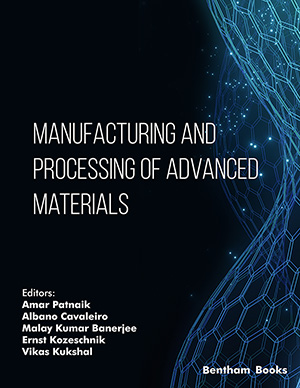Abstract
Background: Wearing is a prominent problem in friction stir welding. The material flow stress equation is a key factor that decides the accuracy of the simulation of the wearing process.
Objective: We aim to propose a material flow stress equation based on material true stress and true strain curve, which takes proper factors into account and leads to good accuracy in numerical simulation of stir tool wear.
Methods: The value of the material temperature rise caused by the material deformation heat and the value of the effect caused by the temperature rise on flow stress was calculated, and the effect value was used to modify the material flow stress and the related curve, and then the modified flow stress equation was obtained. On this basis, the equation was used to simulate the stir tool wear, and the simulation results were compared with those results without considering the effect of temperature rise.
Results & Discussion: the wear amount of the stir needle when considering the effect of temperature rise is significantly less than that when the effect of temperature rise is not considered.
Conclusion: In the simulation of the wear of the stir tool, it is necessary to adopt the modified flow stress equation considering the effect of temperature rise.
Keywords: Stir tool wear, simulation analysis, flow stress equation, material deformation, temperature rise effect, stress-strain curve.
[http://dx.doi.org/10.4028/www.scientific.net/KEM.831.25]
[http://dx.doi.org/10.1007/978-94-007-0350-6]
[http://dx.doi.org/10.1016/S0022-5096(99)00048-4]
[http://dx.doi.org/10.1016/j.compositesb.2009.01.009]

























